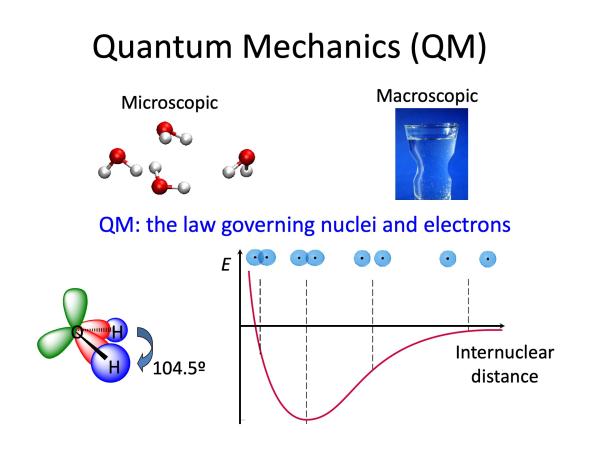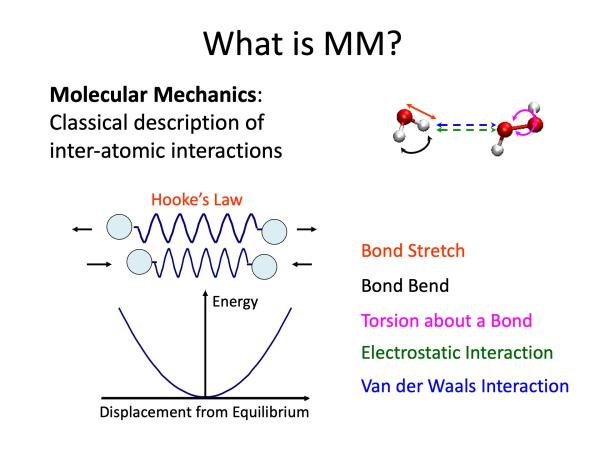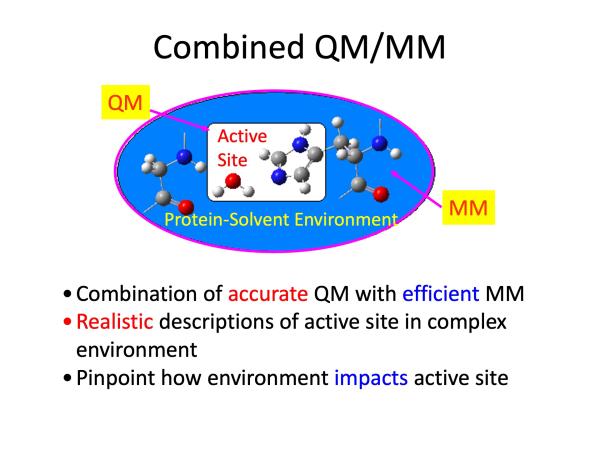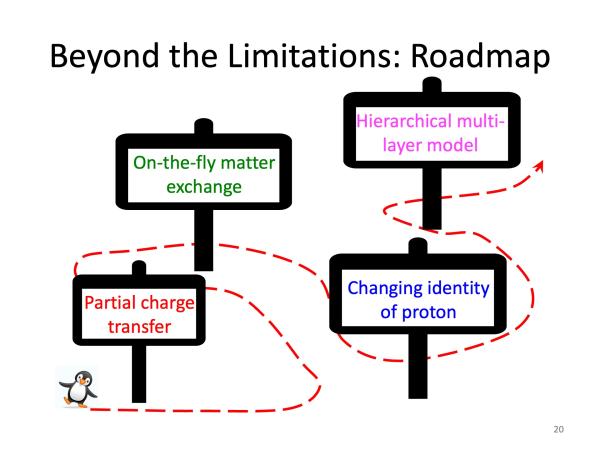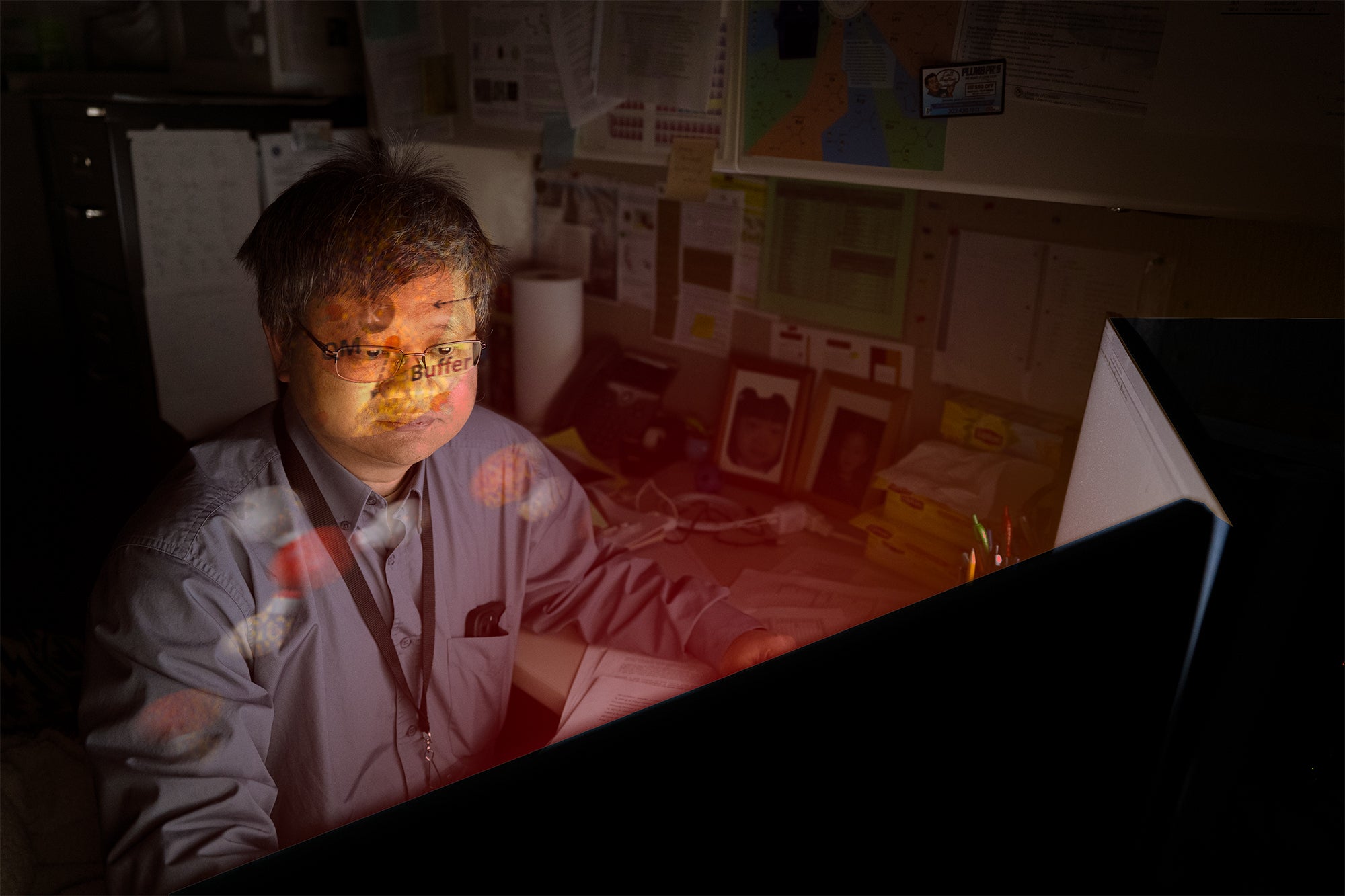
Explore CU Denver Chemistry Graduate Programs
At the University of Colorado Denver, where innovation and access intersect, Chemistry Department Chair and Professor Hai Lin is doing more than leading a department— he's rewriting the rules of multiscale modeling in computational chemistry.
His journey, much like his science, is one of transformation: from struggling with chemistry in high school to pioneering groundbreaking work in computer modeling. Professor Lin's story is a testimony to the power of curiosity, resilience, and what happens when you dare to go beyond the limits.
A Global Path to Discovery
Hai Lin's academic trajectory began far from CU Denver. Born and raised in China, he originally pursued physics, drawn to the theoretical elegance of particle physics. But when the U.S. Congress canceled the Superconducting Super Collider project in the early 1990s, it signaled an abrupt change for the field -- and for Lin.
"'You guys need to change majors. There will be no jobs for you,'" he recalls his professor saying. Lin shifted into engineering and computer science, ultimately earning degrees in engineering, physics, and finally a doctorate in chemistry.
His international career took him from the University of Science and Technology of China to an Alexander von Humboldt fellowship in Germany and subsequent postdoctoral work at the University of Minnesota in the USA. In 2005, he joined CU Denver, where he's been inspiring students and shaping the future of molecular science ever since.
Understanding Chemistry, One Atom at a Time
Today, Professor Lin leads a research group in computational chemistry, a field that uses computer modeling to simulate and understand the behavior of molecules. Think of it as a molecular-level movie, where atoms in motion, as driven by the interactions between them, produce incredibly complex reactions.
To make such exciting movies, one must accurately and efficiently account for the interactions between atoms. One approach is QM/MM, or Quantum-Mechanics/Molecular-Mechanics, which merges the seemingly incompatible quantum and classical descriptions for simulating molecules, and that is where Lin's work centers on.
The Basics of QM/MM, Simplified
Let's break it down:
|
Quantum Mechanics (QM) The law that governs the microscopic world and is preferred when modeling reactions. However, it is so computationally demanding that it can only be applied to very small systems (up to a few hundreds of atoms).
Credit: Prof. Lin - Class Powerpoint
|
Molecular Mechanics (MM) Treats atoms like balls connected by springs - a classical and intuitive picture. It is ideal for modeling large molecules (such as proteins) quickly, but in general it can't handle chemical reactions like bond breaking or forming.
Credit: Prof. Lin - Class Powerpoint |
|
QM/MM The marriage of these two: QM is used for the "active site" (where the real chemistry happens), while MM handles the larger molecular environment that influences the active site. This hybrid model provides combines both accuracy and efficiency— so much so that its original developers, Martin Karplus, Michael Levitt, and Arieh Warshel, received the Nobel Prize in Chemistry in 2013.
|
Hai Lin Pushes Past the Limits
But Lin wasn't content with the traditional way QM/MM combines the two. "The boundary is preset and remains fixed. Classical is classical. Quantum is quantum," he said. "No exchange between them."
So, he asked: what if we could go beyond the limitations by exchanging stuff-charges, even atoms-between the QM and MM zones?
This quest led to a decade-long journey of breakthroughs:
- Flexible Boundaries: Lin enabled partial charge transfer between QM and MM zones using a principle called electronegativity equalization. Picture two water glasses connected at the bottom- if one is fuller, water flows from one to the other to equalize. Lin applied the same concept to electron flowing between quantum and classical zones.
- Adaptive Partitioning: Molecules in motion meant static boundaries were no longer sufficient. Lin developed methods that allow atoms to switch on-the-fly between being treated as QM or MM, depending on their proximity and contributions to the reaction site, without disrupting the dynamics simulations.
- Tracking Protons in Motion: Lin tackled one of the most elusive challenges in the field: modeling how protons "hop" between molecules like a relay baton. This "proton relay" is critical in everything from acid-base reactions to enzyme functions. Lin's solution? A proton indicator- a kind of GPS for locating and tracking the fuzzy path of a proton on the move.
- Multilayer Adaptive Models: Real-world reactions are rarely simple. To handle even higher complexity, in collaboration with departmental colleague Assistant Professor Emilie Guidez, Lin developed multi-layered adaptive models, where different mobile quantum regions are treated with varying levels of detail. This further enables simulations that are both more accurate and more efficient.
In 2025, as recognition for his works, Hai Lin received a prestigious American Chemical Society Colorado Section Award from the American Chemical Society's Colorado Chapter, an honor that recognized his seminal contributions over decades. His research, which advanced foundational ideas in multiscale modeling where QM and MM are integrated, has had lasting influence across the field. Lin is the first CU-Denver faculty member to receive this honor since it was established in 1967.
Why This Matters: Real-World Implications
At first glance, this may seem like esoteric science. But the implications are profound.
- Drug Resistance: Lin's team studied a protein called CLCF, which oral bacteria use to eject fluoride ions (commonly used in toothpaste and dental therapies) from their cells. By simulating this process in atomic detail, Lin's work helps researchers understand how bacteria evolve resistance to fluoride.
- Drug Development: Lin's methods allow researchers to accurately model how enzymes and ion transport proteins work at the atomic level. As many of these proteins are involved in drug actions, the obtained insights can potentially lead to more effective pharmaceuticals.
- Energy and Sustainability: Lin's advancements in simulation efficiency for ions, in particular, proton, may one day help design better batteries, catalysts, and materials for energy storage and conversion.
As Lin puts it: "We reveal the hidden world at the atom level."
"We reveal the hidden world at the atom level," said Lin.
The Only Lab of Its Kind in the U.S.
Adaptive multiscale models are truly at the frontier of computational chemistry, as fewer than ten research groups worldwide are competing in this direction. Remarkably, Lin's lab at CU Denver is currently the only group in the United States capable of performing this level of modeling for proton.
That exclusivity speaks volumes about CU Denver's position on the cutting-edge of scientific research and its commitment to making education that works for all.
What It Means for Students and CU Denver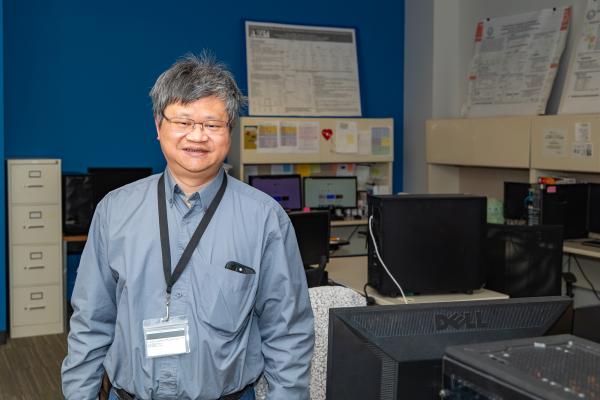
For students, working in Lin's lab opens doors to cutting-edge research experiences in theoretical and computational chemistry. While graduate students and postdocs formulate and implement complex algorithms, undergraduate students engage in application-oriented projects that introduce them to real-world science beyond the textbook.
For CU Denver, it's a point of pride. "It certainly enhances our visibility," Lin says. He's already known in the field across the globe for his pioneering work, and that reputation trickles down to benefit students who go on to industrial careers or graduate programs.
Words of Wisdom: Follow Curiosity
Despite the accolades, Lin remains grounded. He admits that science can be "very depressing" at times, with countless failures before breakthroughs. But he insists that it's all worth it, especially for those brave enough to follow their curiosity.
His advice to future scientists?
"Follow your heart. Pursue something truly innovative when you are young, when you have the energy. Science is still driven by curiosity."
At CU Denver, students and faculty alike are encouraged to ask bold questions and, like Professor Hai Lin, to go beyond the limitations.
Explore CU Denver Chemistry Graduate Degree Programs

